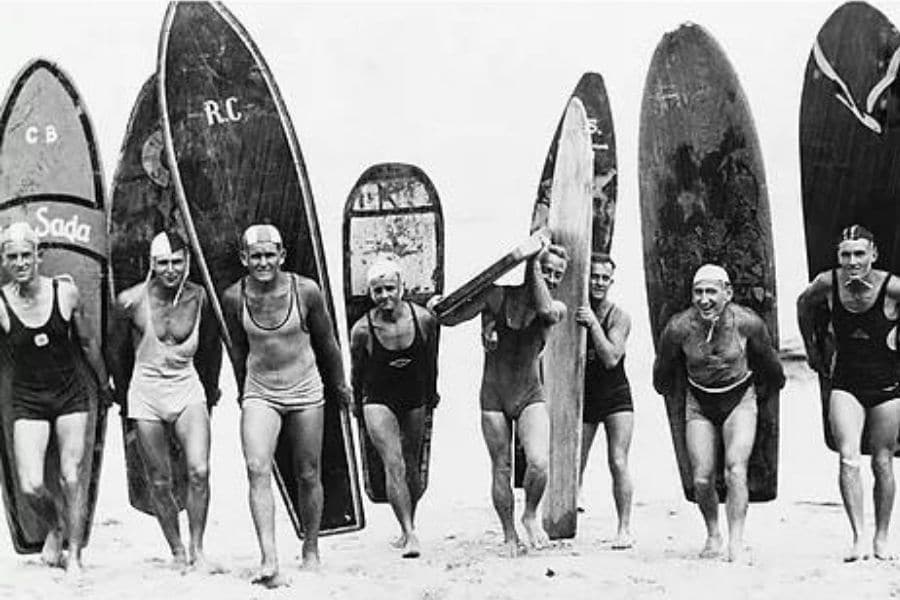Introduction to Surfer Culture
Surfing, more than a sport, constitutes a vibrant, global subculture. It reflects a lifestyle tied intimately to the ocean and nature's rhythm. The surfer ethos, often characterized by adventure, freedom, and a sense of rebellion, impacts their distinctive aesthetic choices. Art, fashion, and interior decor greatly echo these qualities, revealing the surfers' fondness for a laid-back, casual style that emphasizes harmony with the natural environment.

The Origin of Surf Aesthetics
The emergence of surf aesthetics dates back to the mid-20th century, coinciding with the rise of the surfing craze in California. Early surfers, originally Polynesian, crafted their surfboards from local trees, an act that began the natural material association. This preference has carried over into their decor choices, with wood, bamboo, and rattan featuring prominently.
The color palette intrinsic to surf aesthetics draws inspiration directly from the beach environment. Variations of blue symbolize the ocean's changing hues, while sandy neutrals and vibrant greens represent the shoreline and flora. This direct borrowing from nature is an aesthetic homage to the environment surfers cherish.
In the 1960s and '70s, surf art began to take shape, largely influenced by the psychedelic and pop art movements of the time. Vivid, wave-themed artwork, tropical motifs, and stylized depictions of surfers became the norm. These elements now find a place in surf-inspired decor, on walls, fabrics, and even furniture.
Surf aesthetics extends to spatial layout too. As surfers spend a large part of their time outdoors, their living spaces often reflect this preference for openness and light. The surf-inspired home is typically airy, with a seamless integration of indoor and outdoor spaces that mimic the freedom of the ocean.
In essence, the surf aesthetic goes beyond mere fashion. It embodies a holistic lifestyle approach, deeply ingrained in the surfing culture's heart, and reflected in their living spaces.
Core Elements of Surf-Inspired Decor
Surf-inspired decor carries a distinctive vibe, with several core elements contributing to its unique aesthetic. First, there's the prevalent use of natural materials. Wood, bamboo, and rattan form the backbone of surf-style furniture. These earthy textures harmonize with the surfers' environment, often applied with a weathered finish for an added rustic feel.
The color scheme of surf decor is largely inspired by the beach and ocean. Blues and greens, reminiscent of the sea, are common, as well as neutrals evoking sand and seashells. The palette strikes a balance between vibrancy and tranquility, embodying the spirit of surfing.
Patterns and prints play a crucial role in surf aesthetics. Tropical and floral designs are a popular choice, capturing the lush landscapes surrounding many surf spots. Likewise, wave motifs are ubiquitous, representing the heart of the surfing experience.
Art and photography are key components as well, serving to capture surfing's magic. From wall hangings showcasing epic waves to candid shots of beach life, such visuals enhance the space with a sense of authenticity and adventure.

Surfer's Approach to Space
Surfers favor a sense of openness and freedom in their living spaces, akin to the expansiveness of the ocean. The interior design often involves minimalist layouts, with less focus on clutter and more on space. This minimalism, however, does not mean an absence of personality. Surf memorabilia, art pieces, or textiles often pepper these spaces, providing character.
Natural light is a significant aspect too. Surf homes tend to feature large windows or open designs, allowing sunlight to stream in freely. Additionally, the outdoor-indoor integration is common, blurring the lines between interior living spaces and the natural world outside.
Real-Life Examples of Surf-Inspired Decor
Handycor exemplifies a tangible manifestation of surf-inspired decor. Their range includes surfboard wall art with motifs like Monstera leaves and sharks, giving a distinct tropical vibe. They offer surfboard-shaped coffee tables featuring patterns like Gingko tree leaves and turtles, embodying the spirit of the ocean. Handycor's lighting solutions include surfboard wall lamps and unique ceiling chandeliers modeled after marine life like the Hammerhead shark and Manta Ray. All their items are handcrafted, showcasing their commitment to individuality and authenticity, echoing the surfer ethos. By integrating surf culture into everyday decor, Handycor brings the beach indoors, personifying the surfer lifestyle.

Tips for Incorporating Surfing Style into Home Decor
To imbue your space with surf style, start by embracing natural materials and colors. Incorporate tropical prints, wave motifs, and surf-themed artwork. Prioritize light, openness, and a blend of indoor-outdoor living. Ultimately, let the decor reflect the spirit of surfing—freedom, adventure, and a deep connection with nature.
Start with natural materials and colors inspired by the beach. Consider Handycor's surfboard wall art or surf-themed lamps. Introduce surfboard coffee tables to add a touch of adventure. Celebrate the surfer ethos through functional items that speak to your personal style and passion for the surf lifestyle. Bring the waves to your living room!
Conclusion: The Influence and Appeal of Surfing Decor
Surf-inspired decor's allure lies in its ability to encapsulate the freedom and adventure inherent to surfing. It weaves the ocean's ebbs and flows into daily living, transforming homes into personal beachfront retreats. Its influence has traversed beyond surfer homes to hospitality spaces and contemporary interior design, underlining its universal appeal. Companies like Handycor, championing surf aesthetics in their offerings, attest to this growing interest. Ultimately, surf decor remains true to its roots - celebrating nature, embracing simplicity, and creating a space that resonates with the surfer's way of life. It's more than a design style; it's a lifestyle statement.

